For the past two years I’ve been experimenting with note-taking techniques, and have settled on one that works quite well. I call it “Right-Page-Only” note-taking, where I only write on the right page of the notebook. Let me tell you why.
I want to take quick and neat notes and therefore it’s essential I have a consistent and comfortable writing space. This means that no matter where I am writing in the notebook, every page must lie flat, and the thickness of the pad under the page should not change. I use a ring-bound notebook to accomplish this, turning most pages under the spine so I’m always working on a pad of around 10 pages. That keeps my writing surface flat, and close to the table. No matter whether I’m writing at the top of the page or the bottom, the angles of my hand and forearm don’t change much.
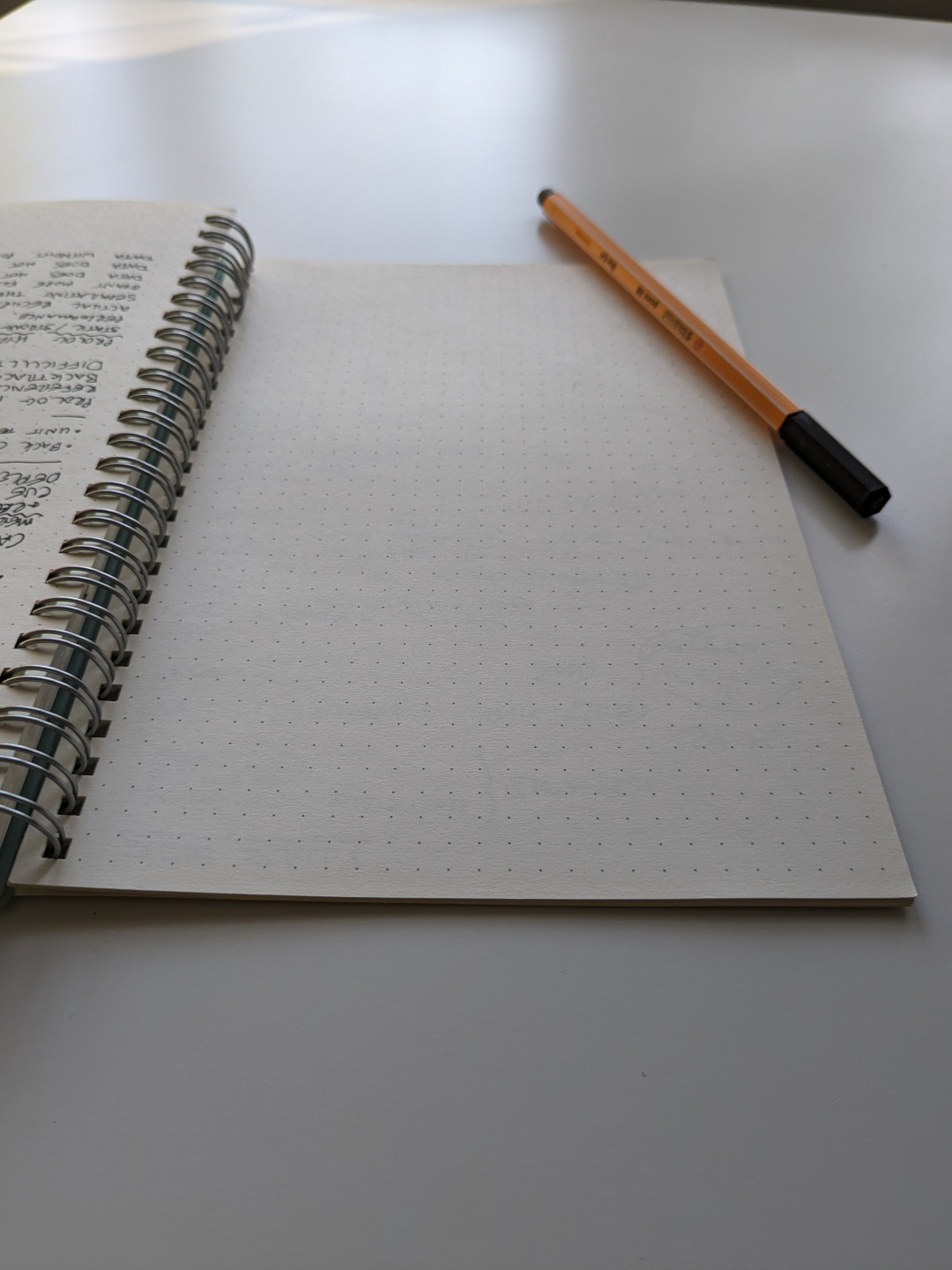
It should be as easy for me to write next to the spine of the notebook as the opposite edge. This is why I only write on the right page. Being right-handed, the back of my writing hand never bumps into the spine. This lets me comfortably write anywhere on the page.
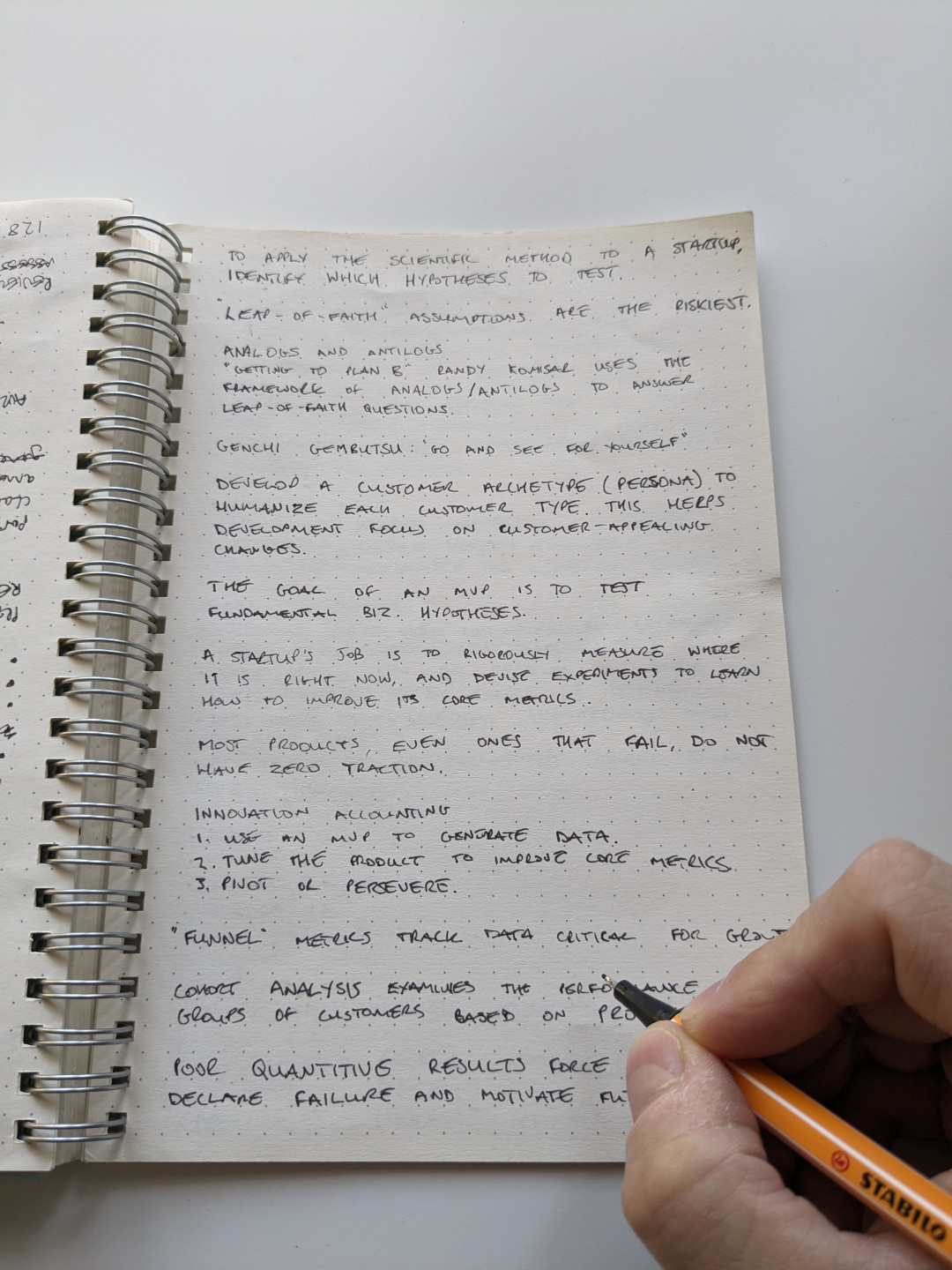
Types of notes
I take both structured and unstructured notes, and keep them separate. Crucially, I never need to take both kinds of notes at the same time. I could use a separate notebook for each, but I don’t want to carry around two notebooks, or ever have to ponder “will I be taking structured notes on this trip?”.
Structured notes are key ideas I’ve distilled from longer-form sources, that I want to remember and reference in the future. I number my structured notes pages and index entries on the front page of the notebook - another benefit of ring-bound notebooks is you can get ones with transparent covers, so the index may be read without opening it. This one is translucent, still readable but not as good:
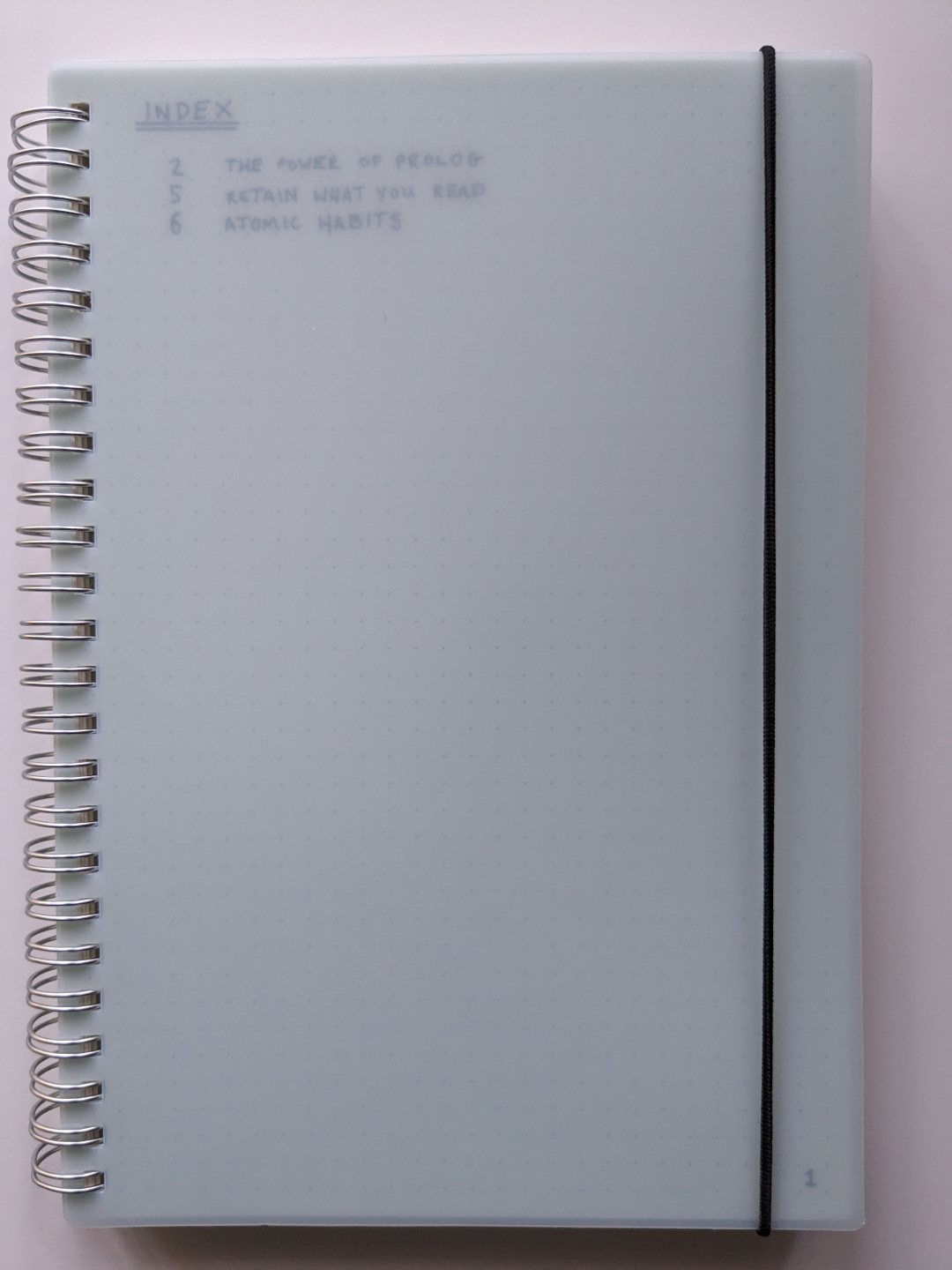
Unstructured notes are my scratchpad of todo-lists and meeting minutes. They’re my working memory aid. To take unstructured notes I start at the other end of the notebook (I vertically flip the notebook over) and turn to the next available page. I use notebooks with symmetrical sheet styles, so that when the notebook is upside down, it doesn’t have a large margin in the wrong place.
I usually run out of scratchpad space first. When this happens I start using the back pages of the structured notes side of the book and work back until I’ve written on every page. At that point the notebook is full, and goes on the shelf for future reference.
Materials
My two favorite pens to write with are the Staedtler Triplus fineliner and the Stabilio point 88. Both fineliners are smooth to write, with black water-based ink that really pops off the page. They won’t dry out if the lid is kept off them for a day or two. Best of all, they are inexpensive.
I don’t have a favorite notepad yet - the notebook shown in these photos is the Lodrepas A5 Dotted 120 GSM paper. I prefer a dotted style over lined or graph paper - the dots help me keep my writing tidy, yet they are less intrusive than lines and work well for sketching diagrams.
Watch out for small ring bindings. On a thin pad, they prevent the paper from laying flat as it is pulled upwards towards the spine. The smaller binding shown below is a problem. I suppose larger punch holes could also fix that.
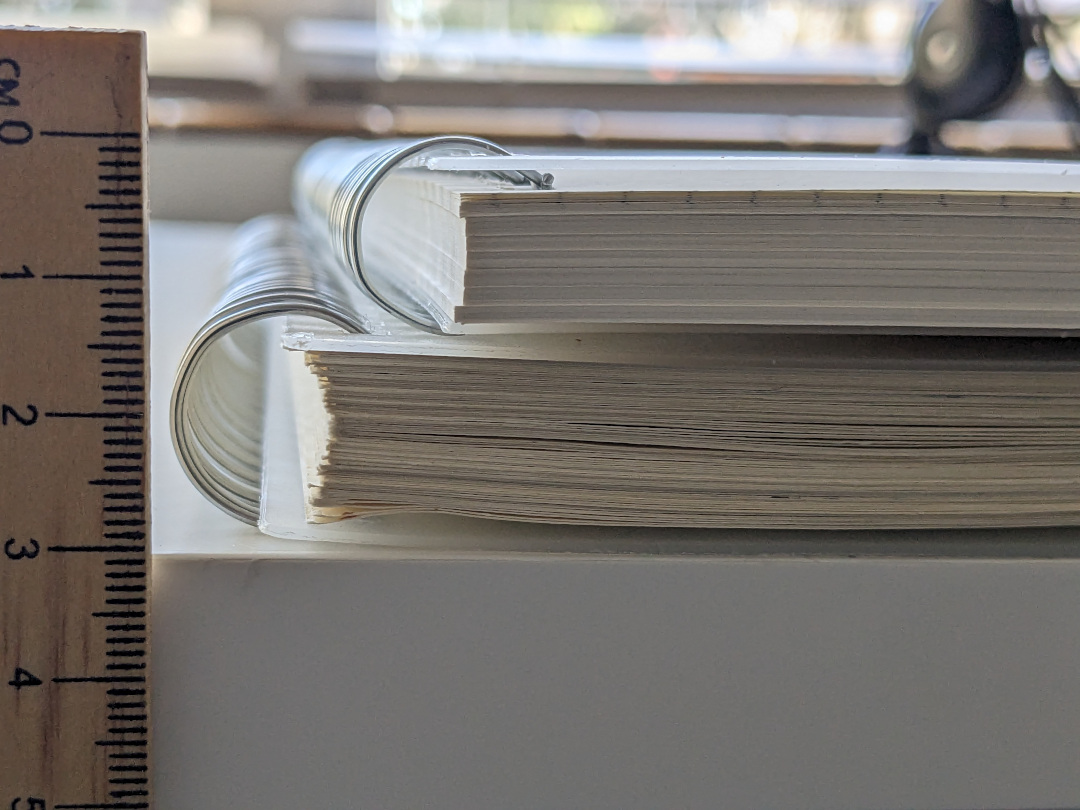
The A5 page size works well for me. It’s small enough that I can take notes on the train, but large enough that I’m not frequently running out of space and flipping the page. At home I use the left page as a mouse pad:
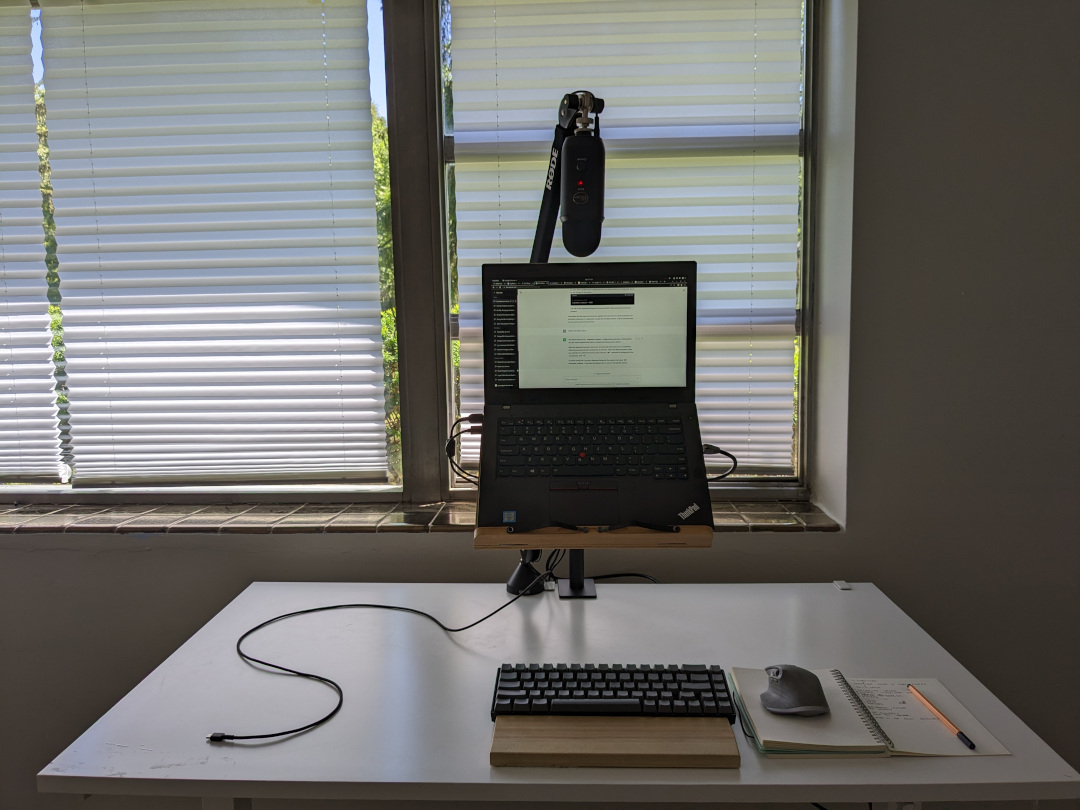
On left handedness
I’m not sure how well this will work for left-handed folks. They might start on the last page of the notebook and work backwards to the front, writing only on the left pages. Another option is to use the notebook in landscape form, like the Midori +Stand is known for (it also doubles as a cute desk sandwich board).
Tags: journaling notebook dotted ring-bound